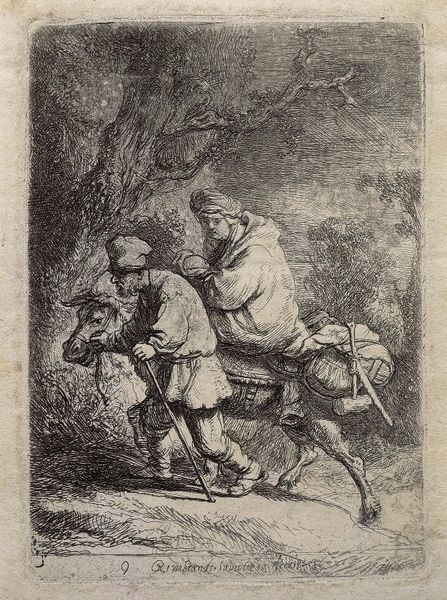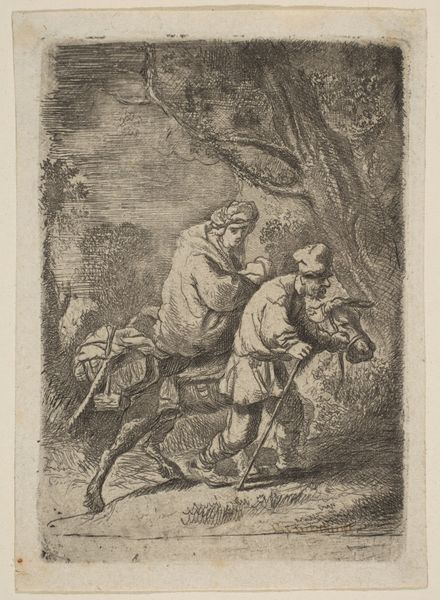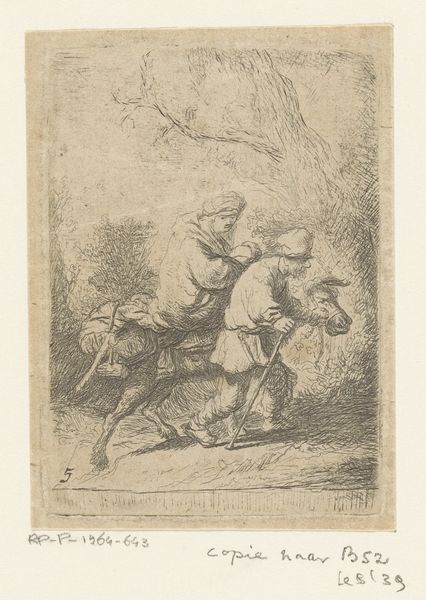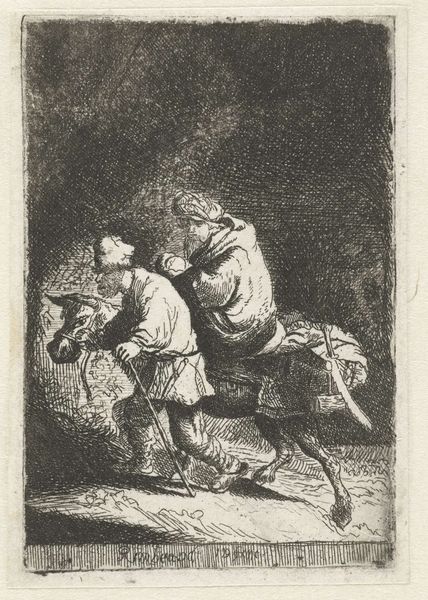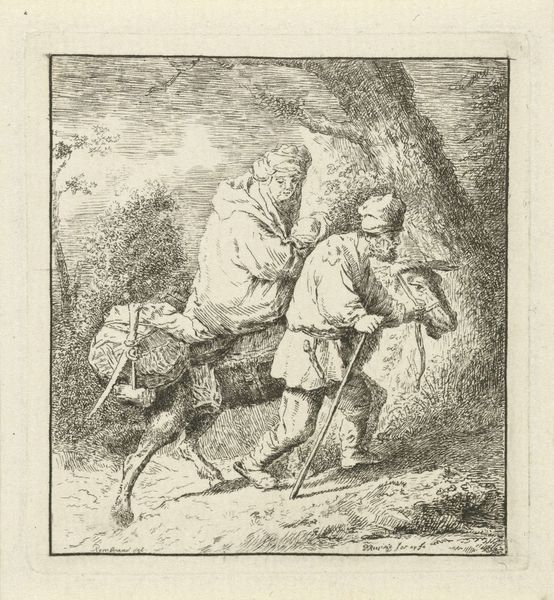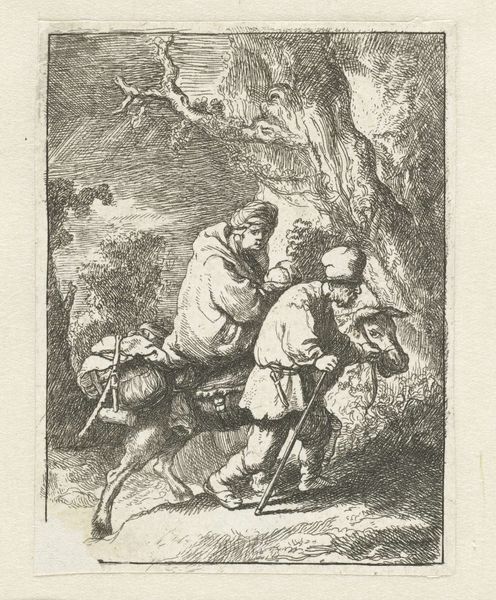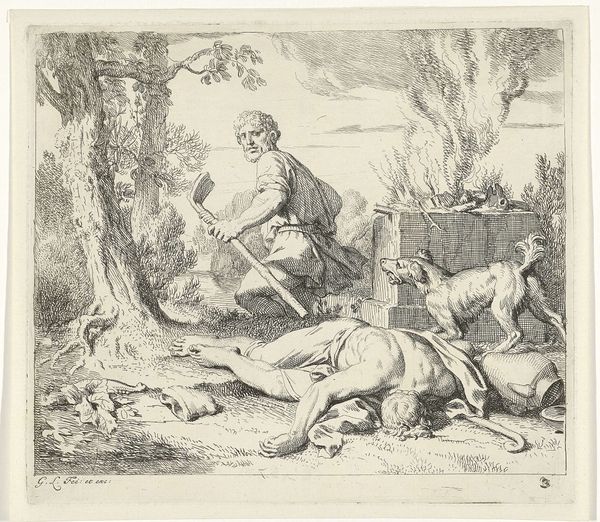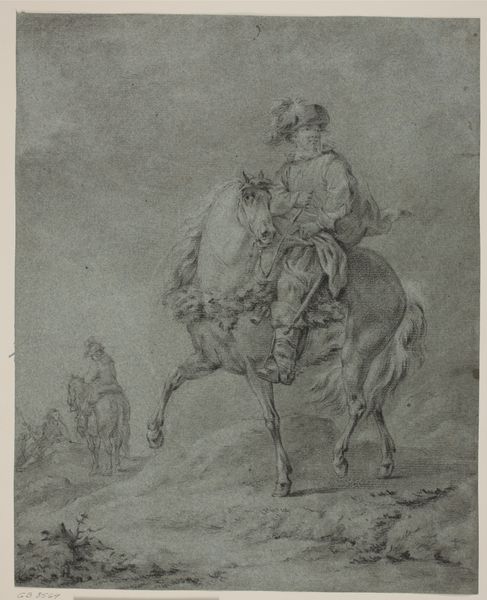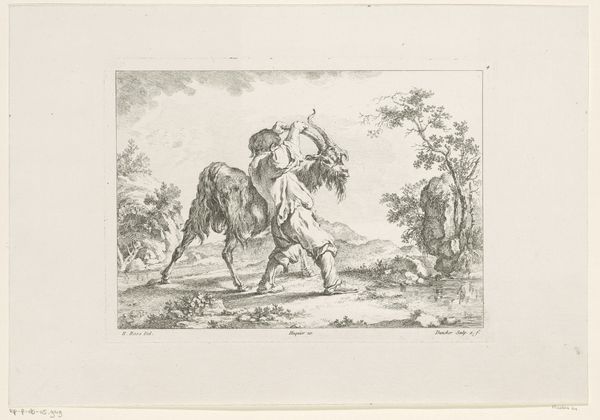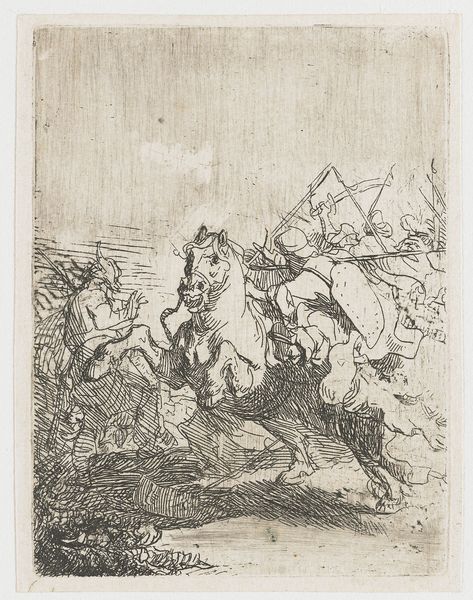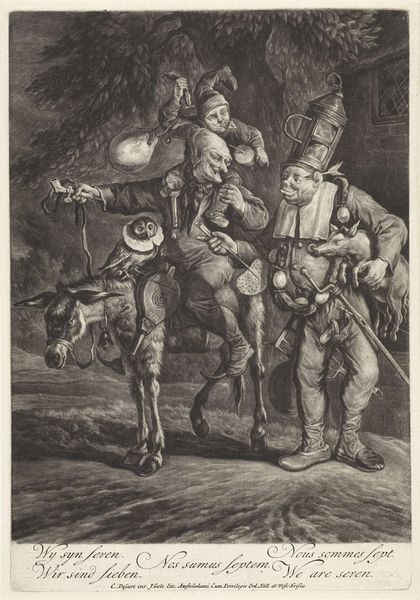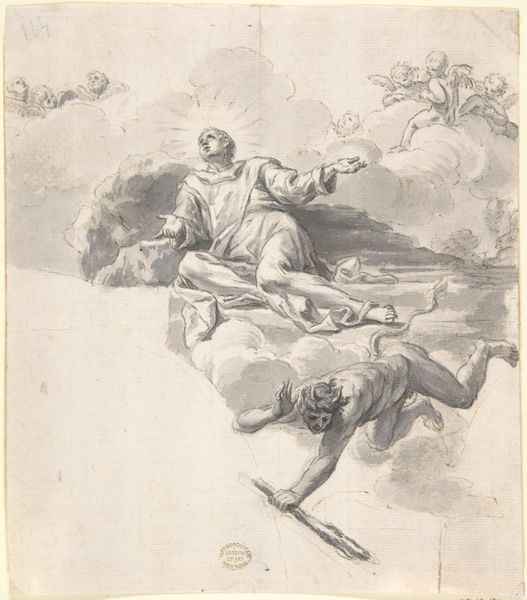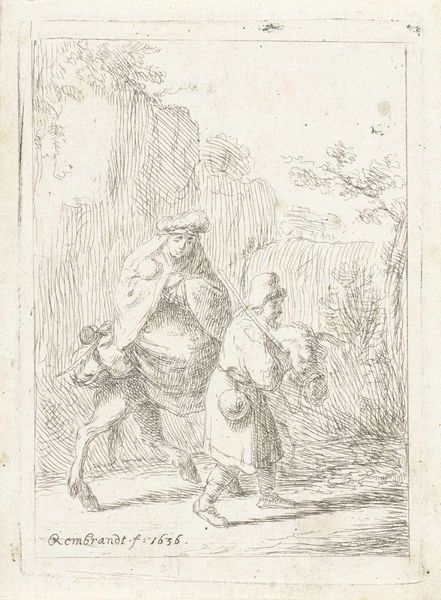
drawing, print, etching, ink
#
drawing
#
baroque
# print
#
etching
#
landscape
#
figuration
#
ink
#
history-painting
Dimensions: height 89 mm, width 62 mm
Copyright: Rijks Museum: Open Domain
Editor: Here we have Rembrandt van Rijn’s "The Flight into Egypt: Small," created in 1633. It's an etching, isn’t it? I'm struck by how much texture he achieves with just lines and ink, really imbuing the whole image with a tangible sense of labor and toil. What draws your eye when you look at this piece? Curator: It’s precisely that sense of labour that I find compelling. Consider the etching process itself. Rembrandt, the craftsman, painstakingly manipulates the materials, biting the plate with acid to create these lines. The darkness isn’t just shadow; it’s the result of deliberate and repeated actions, representing hours of skilled work. Editor: So, you’re seeing the physical act of making as key to its meaning? Curator: Absolutely. Think about the consumption of art at that time. Prints democratized images, making them available to a wider audience than painted works. Each impression involves further labor, additional turns of the press, more ink applied. Editor: That makes sense. So, instead of focusing solely on the religious narrative, we consider the materials and means of its production? Curator: Precisely. Consider the paper itself. Where did it come from? Who made it? What was the socio-economic context of its manufacture and distribution? Those material conditions shaped not only what was represented but also who had access to the story. Even the artist's individual hand represents labour in the economic system of artistic patronage and expanding markets. Editor: It’s interesting to think about this piece as more than just an image but as a product of very specific processes. I never considered the act of creating an etching in terms of materiality. Curator: It’s a lens that shifts our focus to the tangible and often overlooked aspects of art history, reminding us of the economic forces always at play in cultural creation.
Comments
No comments
Be the first to comment and join the conversation on the ultimate creative platform.
